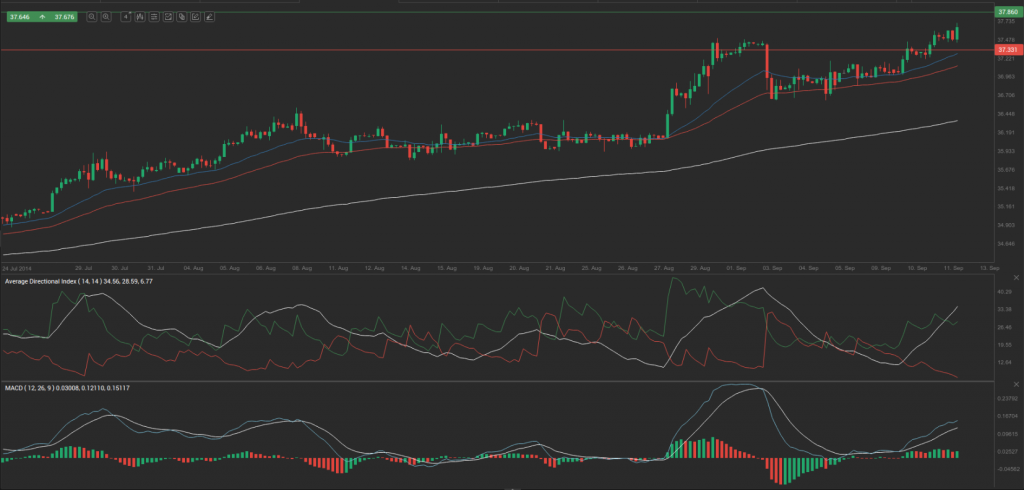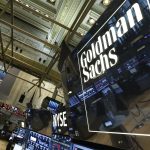Yesterday’s trade saw USD/RUB within the range of 37.252-37.633. The pair closed at 37.562, gaining 0.70% on a daily basis.
At 6:32 GMT today USD/RUB was up 0.48% for the day to trade at 37.696. The pair broke the first key daily and the first key weekly resistances and touched a daily high at 37.714 at 6:05 GMT.
Fundamental view
United States
Retail Sales Index
Retail sales in the United States probably increased 0.6% in August on a monthly basis, according to the median forecast by experts. In July sales remained flat, as sales at auto dealers continued to decrease and receipts in furniture and electronics and appliances stores weakened. Sales at auto dealerships dropped 0.2% in July, following another 0.3% fall in June. Annualized retail sales climbed 3.7% in July, or the slowest pace since February.
The report on retail sales reflects the dollar value of merchandise sold within the retail trade by taking a sampling of companies, operating in the sector of selling physical end products to consumers. The retail sales report encompasses both fixed point-of-sale businesses and non-store retailers, such as mail catalogs and vending machines. US Census Bureau, which is a part of the Department of Commerce surveys about 5 000 companies of all sizes, from huge retailers such as Wal-Mart to independent small family firms.
US core retail sales (retail sales ex autos) probably rose 0.3% in August compared to a month ago, following a 0.1% gain in July. This indicator removes large ticket prices and historical seasonality of automobile sales.
The retail sales index is considered as a coincident indicator, thus, it reflects the current state of the economy. It is also considered a pre-inflationary indicator, which investors can use in order to reassess the probability of an interest rate hike or cut by the Federal Reserve Bank. In addition, this indicator provides key information regarding consumer spending trends. Consumer expenditures, on the other hand, account for almost two-thirds of nation’s total Gross Domestic Product. Therefore, a larger than expected increase in sales would heighten the appeal of the US dollar. The official report is due out at 12:30 GMT.
Michigan University/Reuters Consumer Sentiment
The monthly survey by Thomson Reuters and the University of Michigan may show that consumer confidence in the United States improved in September. The preliminary reading of the corresponding index, which usually comes out two weeks ahead of the final data, probably rose to 83.2 during the current month from a final value of 82.5 in August. The survey encompasses about 500 respondents throughout the country. The index is comprised by two major components, a gauge of current conditions and a gauge of expectations. The current conditions index is based on the answers to two standard questions, while the index of expectations is based on three standard questions. All five questions have an equal weight in determining the value of the overall index.
The sub-index of current economic conditions climbed to 99.8 from a preliminary reading of 99.6 in August, after being at 97.4 in July. Augusts final reading is the highest figure since July 2007. The sub-index of consumer expectations came in at a reading of 71.3, improving from a preliminary value of 66.2 in August, but falling from 71.8, registered in July.
In case the gauge of consumer sentiment showed a larger improvement than projected, this would boost demand for the greenback. The official reading is due out at 13:55 GMT.
Russian Federation
Bank of Russia policy decision
The Central Bank of Russia probably left its benchmark interest rate on hold at 8.0% at its policy meeting today, according to market expectations. The one-week repo rate was raised by 50 basis points (0.50%) to the current 8.0% at the central banks meeting, conducted on July 25th, in order to ease high inflation caused by geopolitical situation. Inflation deceleration in July has been slower than expected. At the same time, inflation risks have increased due to a combination of factors, including inter alia, the aggravation of geopolitical tension and its potential impact on the ruble exchange rate dynamics, according to Bank of Russias statement. As a result, inflation expectations may remain heightened and consumer inflation may exceed the 4% inflation objective during the coming years. In case risks of high inflation continue to persist, the central bank may be urged to introduce further rate hikes in the future.
The annualized inflation rate in the Russian Federation was reported at 7.6% in August, up from 7.5% in July and down from 7.8% in June. Last month prices of alcoholic beverages and tobacco rose at the largest annual pace, or 15.8%, followed by food prices (10.1%), health (9.4%) and education (8.2%).
Short-term interest rates are of utmost importance for the valuation of national currencies. In case the Central Bank of Russia is hawkish about inflationary pressure in Russian economy and, thus, decides to raise rates further, this may provide support to the ruble. Banks key one-week repo rate was at an all-time high of 10.50% in April 2009, while its lowest level on record, 5.00%, was seen in June 2010.
The decision on policy is expected at 9:30 GMT.
New sanctions on the horizon?
According to several European media, the member states of the European Union have come to an agreement to impose new tougher sanctions on the Russian Federation at the meeting of the Economic and Financial Affairs Council, scheduled to be held today.
Technical view
According to Binary Tribune’s daily analysis, the central pivot point for the pair is at 37.482. In case USD/RUB manages to breach the first resistance level at 37.713, it will probably continue up to test 37.863. In case the second key resistance is broken, the pair will probably attempt to advance to 38.094.
If USD/RUB manages to breach the first key support at 37.331, it will probably continue to slide and test 37.101. With this second key support broken, the movement to the downside will probably continue to 36.951.
The mid-Pivot levels for today are as follows: M1 – 37.026, M2 – 37.217, M3 – 37.407, M4 – 37.598, M5 – 37.788, M6 – 37.979.
In weekly terms, the central pivot point is at 37.037. The three key resistance levels are as follows: R1 – 37.423, R2 – 37.902, R3 – 38.288. The three key support levels are: S1 – 36.558, S2 – 36.172, S3 – 35.693.






